Junkyard Gem: 1978 Volkswagen Transporter
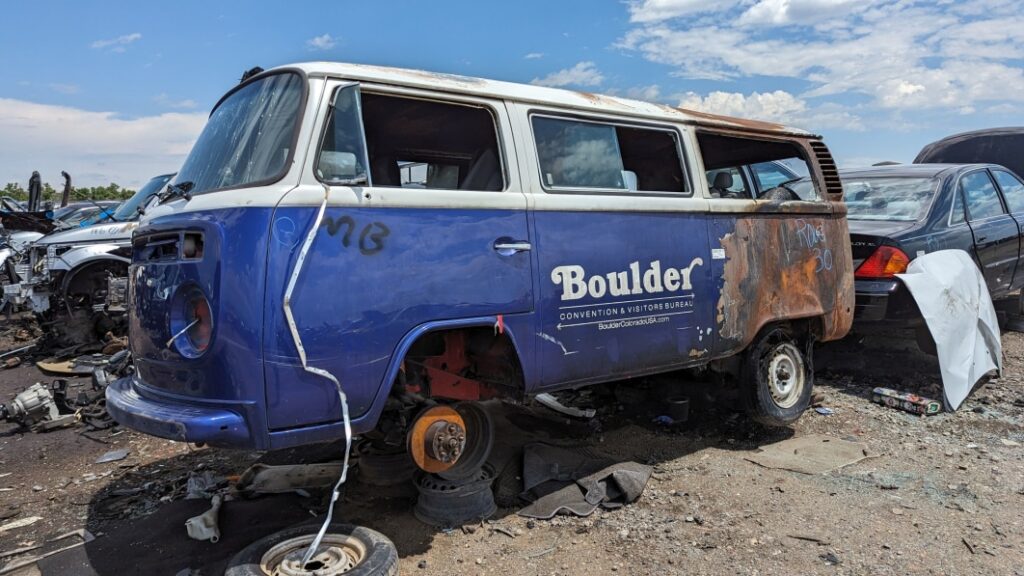
The second generation of the Volkswagen Transporter (sold in the United States from the 1968 through 1979 model years) have been too valuable for genuinely broke hippies to own for at least the last quarter-century, which means that not-so-broke Transporter enthusiasts have driven up their prices enough to keep nearly all rough examples from ending up in car graveyards. During the last 16 years of documenting interesting discarded vehicles, I’d photographed just a well-stripped ’71 and a battered ’78 prior to today’s bus, which met its junkyardy fate in the same way that far too many air-cooled VWs have over the decades: fire.
Before we get to the sad part of this story, let’s talk about this Transporter’s day job during happier times. It was owned by the Boulder Convention & Visitors Bureau, presumably because Boulder is known as a haven for VW Bus-loving hippies (or at least it was known for that, back when genuine hippies—rich in principles and poor in dollars—could afford to live there).
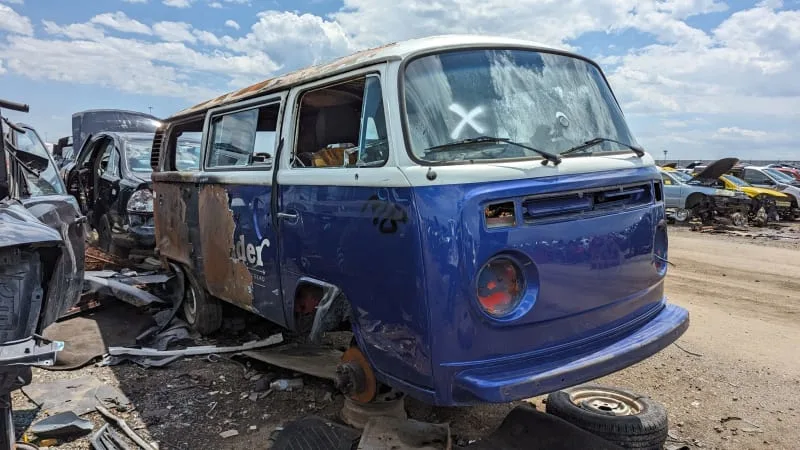
The BC&VB has a beloved orange second-gen Transporter named Delilah, which is equipped with a photo booth and can be rented out for events. I can’t find much online evidence for Delilah’s blue sibling; there’s a 2018 Instagram post showing this bus at the University of Colorado campus and a post from the same year on the BC&VB’s Facebook page soliciting suggestions for a name. Violet, Blueberry, Moonbeam, Indigo and Pearl were listed as possibilities. Maybe this van burned soon after that and then spent five years awaiting repairs that never came.
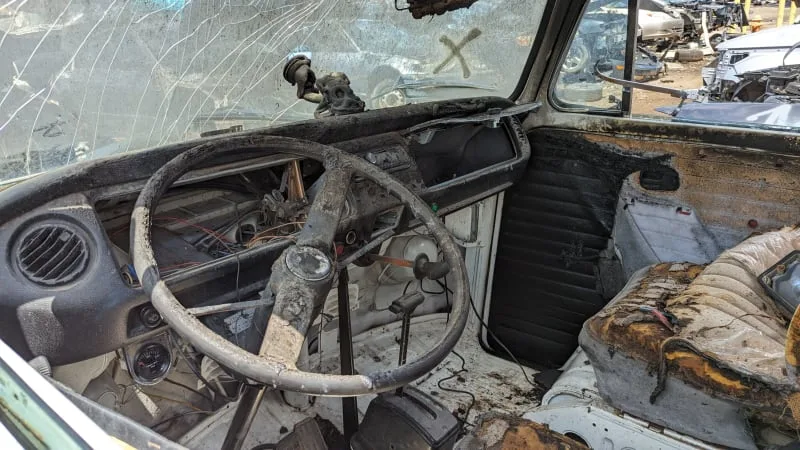
I thought about calling up the BC&VB and asking about this VW, but I didn’t want to traumatize anyone by bringing up the painful subject of the deceased companion of Delilah. Sure, I cheered the destruction (by Caterpillar D9) of an orange second-gen Transporter as a 24 Hours of Lemons official back in 2009, but I understand how someone might have become attached to a T2 Transporter that wasn’t a clattering, disintegrating rusty-ass hooptie.
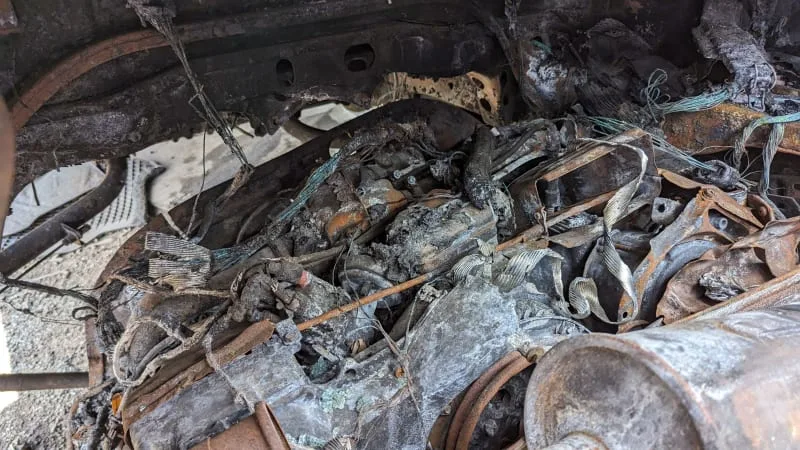
I’ve owned a couple of air-cooled Beetles and I’ve known of several owned by friends that burned to the ground. Back when air-cooled VWs were common sights on American roads—say, the middle 1950s through the early 1990s—there were lots of fires involving these cars. The reason for that is the result of Ferdinand Porsche’s affordable 1930s technology: the cylinders and especially cylinder heads of these engines get very hot, and then the engine’s constant vibration jiggles the fuel lines and filter at the same time the flexible fuel hoses deteriorate in the stifling engine-compartment heat.
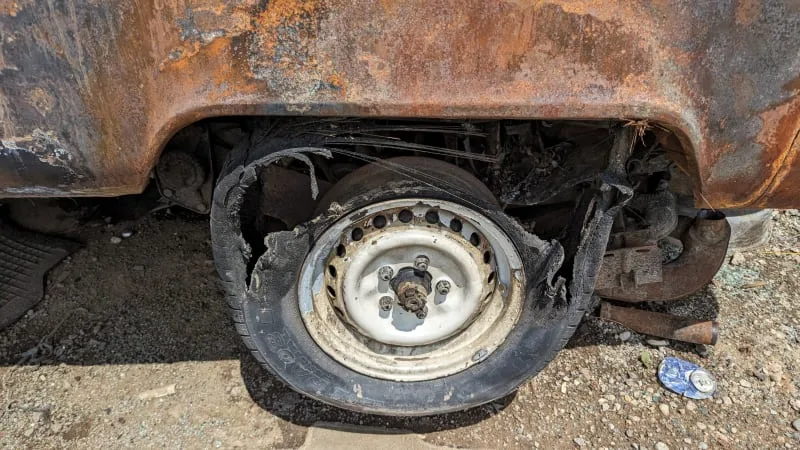
Gasoline ends up pouring onto hot engine parts and a fire starts. Sometimes the heat causes the oil cooler to burst, which adds a fresh source of fuel to the inferno. By the time the driver realizes what’s happening, it’s usually too late; all you can do is pull over, get out, and watch helplessly as the flames consume the entire vehicle.
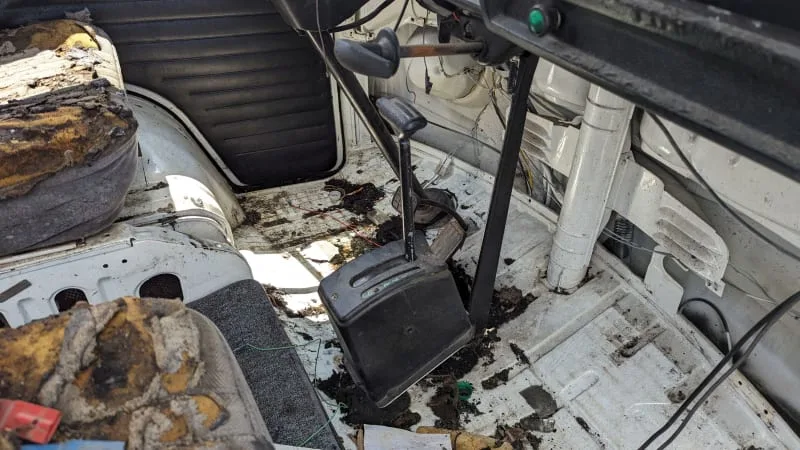
Believe it or not, it was possible to buy a new 1978 Volkswagen Transporter with a three-speed automatic transmission, and that’s what this van has. With just 67 horsepower and 101 pound-feet from its 2.0-liter boxer-four engine, most buyers took the four-speed manual.
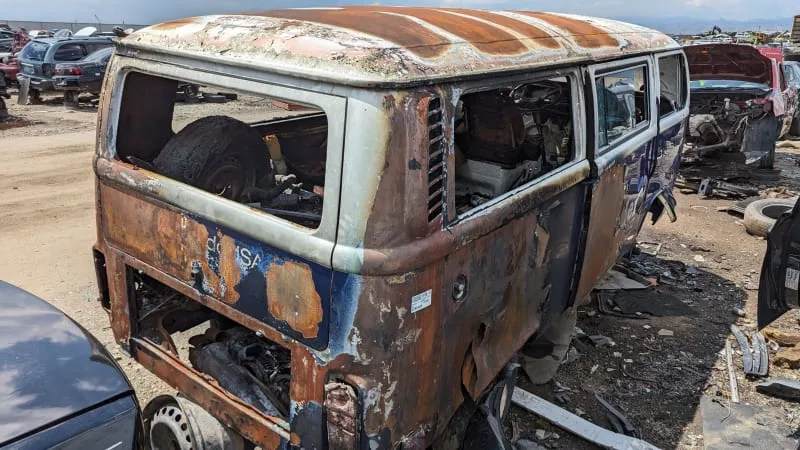
The MSRP for this van would have been $7,420 with the automatic, or about $36,223 in 2023 dollars. Minivans were still a half-dozen years off when this van was new, so there really weren’t any other mainstream choices for American vehicle shoppers who wanted a small, fuel-efficient van in 1978.
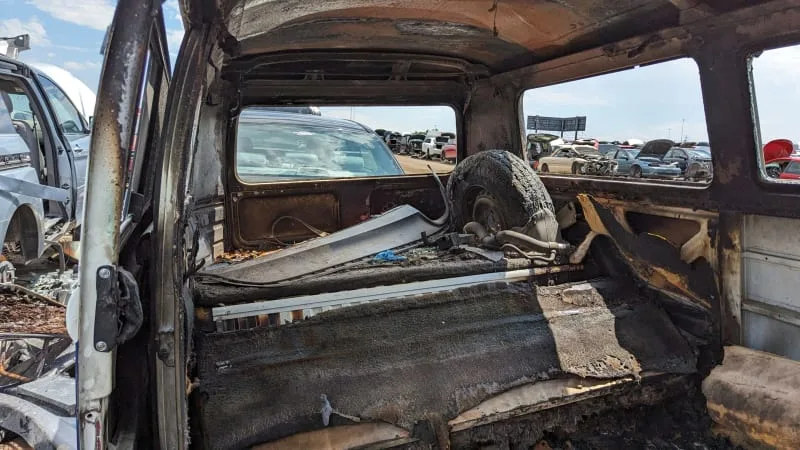
Starting with the 1980 model year, the Volkswagen Vanagon became available in the United States. The Vanagon had an air-cooled engine until a water-cooled version arrived here in 1983. US-market sales of the Vanagon continued through 1991, with the Eurovan taking over in 1993.
When it comes to station wagons, it’s more fun to take the bus!



